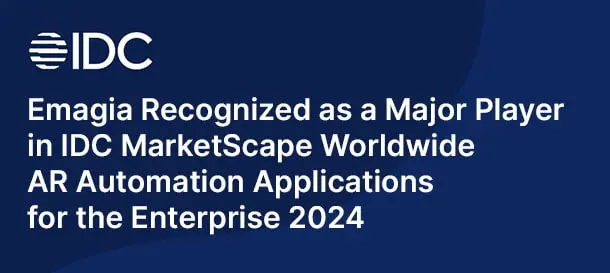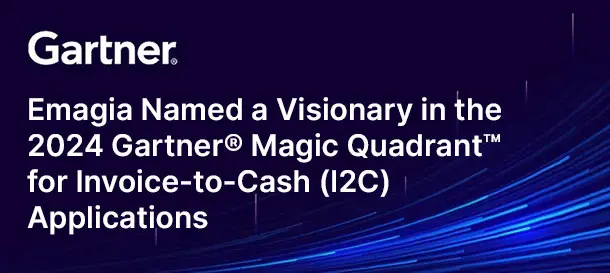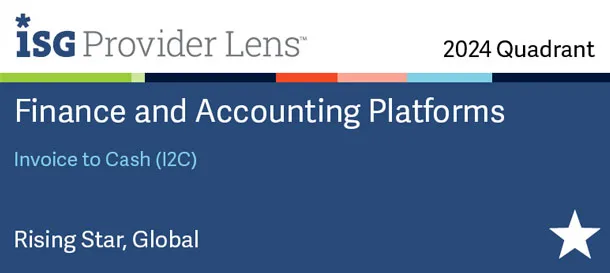The choice between a Cloud-based Order to Cash system and a Legacy Order to Cash system can transform your business operations. From cash flow visibility to operational efficiency, selecting the right O2C platform is critical for CFOs and finance leaders. This guide helps you navigate the differences, benefits, and challenges of cloud and legacy O2C systems, providing a roadmap for digital finance transformation.
Understanding Order to Cash (O2C) Systems
Order to Cash (O2C) systems manage the complete cycle from receiving a customer order to collecting payment. Efficient O2C processes improve cash flow, reduce errors, and enhance customer satisfaction. Companies rely on these systems to streamline invoicing, credit management, collections, and reconciliation.
Legacy Order to Cash Systems
Legacy O2C systems are typically on-premise solutions integrated into older ERP platforms. While they provide core O2C functions, these systems often require manual data entry, extensive IT support, and offer limited real-time visibility into receivables and payments.
Cloud-based Order to Cash Systems
Cloud O2C systems are SaaS-based platforms that provide automated workflows, real-time dashboards, and seamless integration with CRM and ERP systems. These systems are designed to reduce errors, improve cash flow, and enable finance teams to focus on strategic activities rather than manual processes.
Cloud vs Legacy O2C Comparison
Evaluating cloud vs legacy systems is essential to determine which aligns best with your business objectives and digital transformation goals.
Cost Analysis: Cloud vs Legacy ERP
Cloud-based O2C systems reduce upfront capital expenditure since there is no need for servers or extensive IT infrastructure. Subscription pricing allows predictable budgeting, unlike legacy systems that have higher maintenance costs and periodic upgrade expenses.
Implementation Speed and Scalability
Cloud O2C platforms offer faster deployment with pre-configured modules and intuitive interfaces. Businesses can scale usage quickly as operations grow, whereas legacy systems often require complex upgrades and additional hardware to expand capabilities.
Automation and AI in Cloud O2C
Modern cloud systems leverage AI-driven automation for invoice processing, credit scoring, and collections management. Predictive analytics help finance teams anticipate payment delays and take proactive measures to maintain liquidity.
Data Security and Compliance
Cloud O2C solutions provide enterprise-grade security, including encryption, multi-factor authentication, and regular compliance audits. Legacy systems, while secure, may lack modern security protocols and require significant IT resources to maintain compliance.
Modern O2C Software Features
Intelligent Order to Cash Automation
Automation in cloud systems reduces manual data entry, accelerates invoice generation, and enables real-time tracking of outstanding receivables, improving overall cash flow management.
Connected Finance Ecosystem
Cloud platforms integrate seamlessly with ERP, CRM, and payment gateways, providing real-time insights and ensuring financial data consistency across departments.
Predictive Analytics and Reporting
Finance teams can leverage dashboards and predictive analytics to forecast cash flow, monitor overdue invoices, and optimize collections, providing CFOs with actionable insights for decision-making.
Hybrid O2C Models
Some organizations adopt hybrid approaches that combine cloud flexibility with existing legacy infrastructure, gradually transitioning processes to the cloud while maintaining business continuity.
Benefits of Cloud-based O2C Systems
Enhanced Cash Flow Visibility
Cloud O2C dashboards offer real-time tracking of outstanding invoices, overdue accounts, and payment trends, enabling proactive collections and better working capital management.
Reduction of Manual Errors
Automation minimizes errors in invoice creation, credit scoring, and reconciliation, improving accuracy compared to manual workflows in legacy systems.
Faster ROI and Scalability
Cloud solutions provide quicker return on investment by reducing IT overhead, increasing operational efficiency, and scaling easily with business growth.
Improved Compliance and Audit Readiness
Automated audit trails, digital documentation, and tax compliance features reduce risk and streamline financial audits.
Challenges of Legacy O2C Systems
High Maintenance Costs
Maintaining on-premise servers, software updates, and IT support results in higher operational costs for legacy systems.
Limited Flexibility and Integration
Legacy O2C platforms often have poor integration capabilities, restricting workflow optimization and limiting real-time data visibility.
Slower Decision-making
Siloed data in legacy systems can delay reporting, impacting strategic decisions and cash flow management.
Migration from Legacy ERP to Cloud O2C
Migrating from a legacy O2C system to a cloud-based platform requires careful planning and execution. Proper migration ensures minimal disruption to business operations and maximizes the benefits of cloud automation.
Planning and Roadmap
Before migrating, organizations must define a clear roadmap. This includes mapping current workflows, identifying data dependencies, and planning for employee training to ensure smooth adoption.
Hybrid vs Full Cloud Approach
Many companies adopt a hybrid strategy initially, integrating cloud modules with existing legacy infrastructure. Gradually, processes are moved entirely to the cloud to achieve full O2C modernization.
Cost-Benefit Evaluation
Migration costs include subscription fees, integration expenses, and training. However, these are offset by long-term gains such as faster cash collections, reduced manual errors, and enhanced operational efficiency.
Advanced Cloud O2C Features
AI-driven O2C Automation
Cloud O2C platforms use artificial intelligence to automate credit checks, invoice processing, and collections. AI reduces human errors, accelerates processing, and predicts potential payment delays.
Predictive Analytics in Cash Application
Predictive analytics tools analyze historical payment data to forecast cash inflows, identify high-risk accounts, and optimize collection strategies.
Intelligent Document Processing
Cloud platforms leverage intelligent document processing to automatically extract data from invoices, purchase orders, and payment receipts, reducing manual effort and errors.
API-driven Integration
Modern cloud O2C systems integrate via APIs with CRM, ERP, and banking systems. This connectivity ensures seamless data flow across finance, sales, and operations.
Smart Credit and Collections Automation
Automated credit scoring and collections workflows enable finance teams to prioritize high-risk accounts and streamline payment follow-ups, improving working capital efficiency.
CFO Strategies for O2C Modernization
Assessing Cloud Readiness
CFOs should evaluate whether the organization’s processes, culture, and IT infrastructure are ready for cloud adoption. This includes analyzing legacy system dependencies and potential integration challenges.
Defining ROI Metrics
Key performance indicators for O2C modernization include reduced Days Sales Outstanding (DSO), improved cash flow visibility, fewer manual errors, and faster invoice processing.
Change Management and Training
Successful cloud adoption requires training finance teams and stakeholders. Change management ensures employees understand new workflows and leverage automation tools effectively.
Risk Management and Compliance
CFOs must ensure that cloud O2C platforms meet regulatory standards, data security requirements, and audit compliance, mitigating risks associated with digital transformation.
Hybrid O2C Models
Some organizations adopt hybrid models, combining cloud modules with legacy ERP systems. This approach allows gradual migration while maintaining operational continuity.
Benefits of Hybrid Models
Hybrid systems provide flexibility, allowing businesses to leverage cloud automation where most beneficial while keeping critical legacy processes intact.
Challenges of Hybrid Models
Hybrid setups may require complex integration and ongoing maintenance to ensure data consistency across cloud and legacy systems.
Cloud O2C and Digital Transformation
Connected Finance Ecosystem
Cloud-based O2C systems enable a fully connected finance ecosystem, integrating with procurement, sales, and banking operations to provide real-time insights.
Real-time Visibility
With dashboards and analytics, finance leaders can monitor outstanding receivables, predict cash flow, and make data-driven decisions that enhance business performance.
Generative AI in O2C
Emerging generative AI technologies can automate document generation, predictive modeling, and decision-making in collections and cash application processes.
Impact on Working Capital Efficiency
Cloud O2C automation reduces delays, improves collections, and optimizes cash conversion cycles, leading to enhanced working capital efficiency and financial resilience.
Cloud vs Legacy: Final Comparison
Performance and Scalability
Cloud O2C systems outperform legacy solutions in scalability, speed, and operational efficiency. Legacy systems may struggle to handle increased transaction volumes or global expansion.
Cost Efficiency
While legacy systems have high maintenance costs, cloud platforms offer predictable subscription pricing and lower total cost of ownership over time.
Automation and AI Advantage
Cloud systems leverage AI to reduce manual processes, automate credit and collections, and provide predictive insights—capabilities rarely available in legacy systems.
Data Security and Compliance
Modern cloud O2C platforms offer advanced security protocols, encryption, and compliance certifications, ensuring protection of sensitive financial data.
Next Steps for Businesses Considering Cloud O2C
Evaluate Current Processes
Analyze existing legacy O2C workflows to identify bottlenecks, manual dependencies, and areas that can benefit most from cloud automation.
Engage Stakeholders
Involve finance, IT, and operations teams early to align expectations, define KPIs, and prepare for system adoption.
Define Migration Roadmap
Plan phased migration, considering hybrid models, data transfer, training, and integration requirements to ensure a smooth transition.
Measure and Optimize
After deployment, monitor performance metrics such as DSO reduction, automation efficiency, and ROI to continuously optimize cloud O2C processes.
End-to-End O2C Performance Optimization
Cloud-based O2C systems enable organizations to optimize every stage of the order-to-cash cycle. By integrating automation, AI, and analytics, companies can achieve faster collections, reduce errors, and improve working capital efficiency.
Order Management Automation
Automated order entry, validation, and approval reduce processing time and minimize human errors. Cloud platforms provide real-time tracking from order creation to invoicing, improving operational efficiency.
Invoice Processing in Cloud ERP
Intelligent document processing automates invoice creation and verification. Cloud systems can validate invoice data against orders and contracts, detect discrepancies, and ensure compliance with financial regulations.
Digital Payment and E-invoicing Integration
Cloud O2C solutions integrate seamlessly with digital payment gateways and e-invoicing platforms, enabling faster payments and reducing manual reconciliation efforts.
SaaS-based Accounts Receivable Management
Cloud SaaS solutions provide visibility into outstanding receivables, enable automated follow-ups, and generate predictive insights to manage credit risk effectively.
Connected Finance Ecosystem
Integration with ERP, CRM, procurement, and banking systems ensures consistent, accurate, and real-time data flow across the organization, supporting better decision-making.
Benefits of Cloud O2C for Finance Teams
Reduced Manual Intervention
Automation in cloud O2C reduces repetitive manual tasks such as data entry, invoice verification, and reconciliation, allowing finance teams to focus on strategic activities.
Real-Time Analytics and Reporting
Dashboards and predictive analytics provide insights into outstanding invoices, cash flow trends, and collections efficiency, enabling proactive management.
Improved Customer Experience
Faster invoice processing, accurate billing, and seamless payment options enhance customer satisfaction and strengthen relationships.
Scalability and Flexibility
Cloud platforms scale with business growth, accommodating new products, markets, or transaction volumes without additional infrastructure investments.
Future of Cloud Finance Operations
Intelligent Automation
Emerging AI technologies will further automate credit management, collections, and dispute resolution, enabling finance teams to operate more strategically and efficiently.
Predictive Analytics and Cash Flow Forecasting
Advanced analytics will provide precise cash flow forecasts, helping CFOs make informed decisions on investments, working capital, and risk management.
Generative AI for O2C Processes
Generative AI can assist in document generation, automated communication with customers, and predictive modeling for collections, further streamlining O2C workflows.
Connected Finance Ecosystem
Finance departments will become fully integrated with operations, sales, procurement, and treasury, ensuring real-time visibility and better collaboration across the enterprise.
Digital Resilience and Cloud Adoption
Cloud-based O2C systems provide businesses with the agility and resilience to adapt to market changes, regulatory updates, and evolving customer expectations.
How Emagia Supports Cloud O2C Transformation
Emagia provides an AI-powered, cloud-native O2C platform designed to optimize every step of the order-to-cash process. With intelligent automation, predictive analytics, and seamless integration capabilities, Emagia helps finance teams reduce manual effort, improve cash flow visibility, and accelerate collections. Its solution includes:
- AI-driven invoice processing and credit management
- Real-time dashboards and predictive cash flow insights
- Seamless integration with ERP, CRM, and banking systems
- Automated dispute resolution and collections workflows
- End-to-end visibility for CFOs and finance leaders
By leveraging Emagia’s platform, organizations can modernize legacy O2C processes, improve operational efficiency, and enhance working capital management.
Frequently Asked Questions About Cloud-based vs Legacy O2C Systems
What is the difference between cloud-based and legacy O2C systems?
Cloud-based O2C systems are SaaS platforms hosted online, offering automation, real-time analytics, and integration with ERP and CRM systems. Legacy O2C systems are typically on-premise solutions with manual processes, slower reporting, and limited scalability.
Why should businesses migrate from legacy ERP to cloud O2C?
Migrating to cloud O2C improves operational efficiency, reduces manual errors, provides real-time cash flow visibility, and allows finance teams to leverage AI and predictive analytics for better decision-making.
How does AI improve cloud O2C processes?
AI automates credit management, invoice processing, collections, and dispute resolution. It provides predictive insights, identifies payment risks, and reduces human intervention, ensuring faster and more accurate order-to-cash cycles.
Can hybrid O2C models work for my organization?
Yes, hybrid O2C models allow businesses to gradually transition from legacy systems to cloud platforms. They enable phased adoption while maintaining business continuity and integrating cloud automation where it is most beneficial.
What are the benefits of cloud O2C for finance teams?
Benefits include real-time cash flow visibility, faster invoice processing, automated collections, improved accuracy, scalability, and predictive analytics for better financial decision-making.
How does cloud O2C affect working capital efficiency?
Cloud O2C systems reduce delays in collections, improve cash flow forecasting, and automate credit and collections management, resulting in optimized working capital and improved liquidity.
What are the security considerations for cloud O2C platforms?
Cloud O2C platforms offer enterprise-grade security with encryption, multi-factor authentication, and compliance with financial regulations. Regular security audits ensure protection of sensitive financial data.
How long does it take to implement a cloud O2C system?
Implementation duration depends on business size and complexity, but cloud platforms are typically faster to deploy than legacy systems. With pre-configured modules and templates, organizations can achieve operational readiness in weeks to a few months.
Can cloud O2C integrate with existing ERP and CRM systems?
Yes, cloud O2C platforms provide API-based integration with ERP, CRM, and banking systems, ensuring seamless data flow and real-time visibility across all finance and operations processes.
Is cloud O2C cost-effective compared to legacy systems?
Cloud O2C solutions generally have lower total cost of ownership due to reduced IT infrastructure, lower maintenance costs, subscription pricing, and improved operational efficiency, making them more cost-effective in the long term.
Conclusion
Choosing between a cloud-based and a legacy O2C system is a strategic decision that impacts cash flow, operational efficiency, and business scalability. Cloud O2C systems provide automation, AI-driven insights, real-time visibility, and seamless integrations that legacy systems cannot match. By assessing current workflows, evaluating migration strategies, and leveraging modern cloud technologies, businesses can transform their order-to-cash processes, reduce manual effort, and optimize working capital.
Modern finance leaders must consider cloud adoption not only for operational efficiency but also for long-term growth, digital resilience, and improved customer satisfaction. With a clear roadmap, hybrid or full cloud deployment, and intelligent automation, organizations can achieve a future-ready, fully optimized O2C process.



